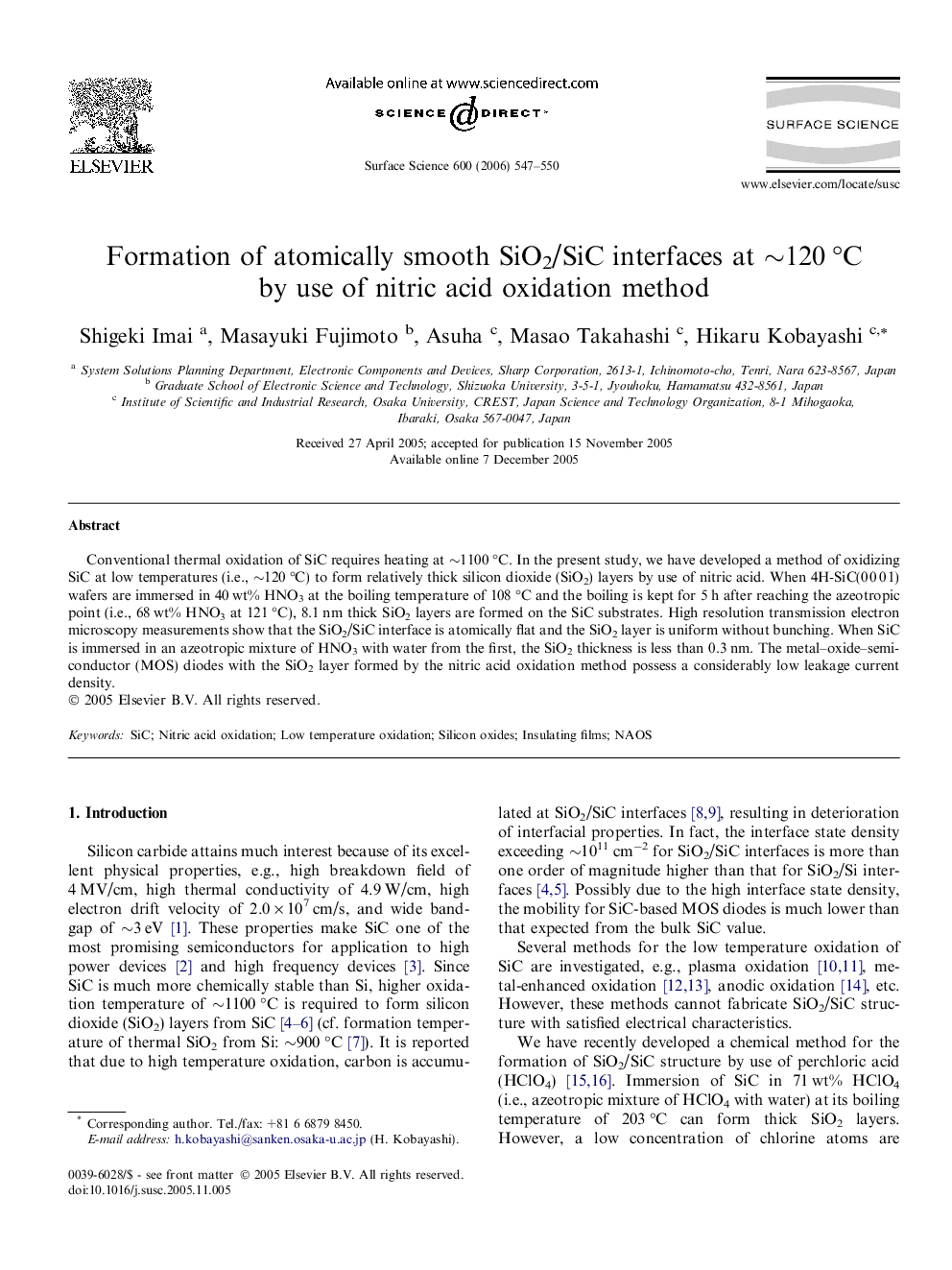| Article ID | Journal | Published Year | Pages | File Type |
|---|---|---|---|---|
| 5426859 | Surface Science | 2006 | 4 Pages |
Conventional thermal oxidation of SiC requires heating at â¼1100 °C. In the present study, we have developed a method of oxidizing SiC at low temperatures (i.e., â¼120 °C) to form relatively thick silicon dioxide (SiO2) layers by use of nitric acid. When 4H-SiC(0 0 0 1) wafers are immersed in 40 wt% HNO3 at the boiling temperature of 108 °C and the boiling is kept for 5 h after reaching the azeotropic point (i.e., 68 wt% HNO3 at 121 °C), 8.1 nm thick SiO2 layers are formed on the SiC substrates. High resolution transmission electron microscopy measurements show that the SiO2/SiC interface is atomically flat and the SiO2 layer is uniform without bunching. When SiC is immersed in an azeotropic mixture of HNO3 with water from the first, the SiO2 thickness is less than 0.3 nm. The metal-oxide-semiconductor (MOS) diodes with the SiO2 layer formed by the nitric acid oxidation method possess a considerably low leakage current density.
